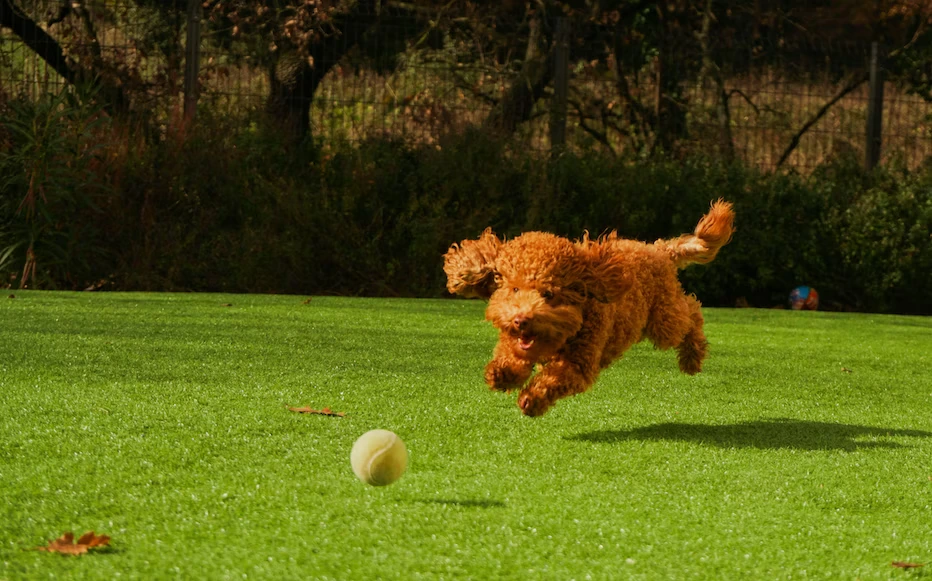In recent years, our perspective on dogs has transformed. They’ve evolved from being mere guardians to cherished family members and faithful companions.
As responsible pet parents, we’re bombarded with advice on how to provide the best possible life for our furry buddies. Two fundamental elements consistently highlighted are exercise and socialization.
Dog parks have emerged as an ideal solution to fulfill both of these needs with minimal hassle.
However, the quest to find the right dog park can be a daunting one. In this guide, we’ll dive into the art of discovering a perfect dog park that guarantees a blend of fun and safety for your four-legged friend.
Understanding the Significance of Dog Parks
Exercise and socialization rank high on the list of essentials for a dog’s well-being. Regular exercise contributes to their physical health, happiness, and overall good behavior.
Socializing with fellow canines fosters crucial social skills and can help reduce aggressive tendencies.

Dog parks serve as a convenient one-stop-shop for fulfilling these needs. Nonetheless, concerns surrounding safety and etiquette often deter some pet parents from taking the plunge.
With a little research and some prudent measures, you can navigate this world of off-leash play and ensure a wonderful experience for both you and your beloved pet.
Defining What Makes a Dog Park Truly “Good”
Not all dog parks are created equal. Just as you’d assess a regular park’s suitability for your family, several factors come into play when choosing a dog park. Here are the key criteria to consider:
1. Space: Room to Roam
Ideally, you’ll want to locate a dog park with ample room for dogs to move around freely.
Overcrowded parks can lead to chaos, with dogs and owners tripping over one another and tensions escalating.
It’s essential that there’s enough space for your dog to take a breather if things get too exciting.
Dog parks can be a whirlwind of activity, and even the most composed dogs can become overstimulated. Having an area where they can unwind and regroup is vital.
2. Cleanliness: A Hygienic Haven
While a certain amount of dog waste is to be expected at a dog park, there should be limits.
Look for a park that undergoes regular cleaning, both by conscientious pet parents and, ideally, by dedicated city workers or volunteers.
Dog feces can harbor harmful bacteria, some of which can linger on surfaces for extended periods. For instance, diseases like parvovirus can persist on grass or soft surfaces for up to two years.
Ensuring that your dog is up-to-date on vaccinations and choosing a clean park can significantly reduce the risk of them contracting any nasty illnesses.
3. Responsible Owners: The Backbone of Park Harmony
Perhaps the most critical factor in shaping your dog park experience is the presence of responsible, informed, and engaged pet parents.
Before venturing to a dog park, you must thoroughly understand your pet’s temperament.
Familiarize yourself with their energy level, preferences, mood swings, and warning signs.
Introduce them to other dogs in controlled, leashed environments several times to gauge their reactions.
Initiating your dog into the world of unfamiliar canine companions within the confines of a dog park is akin to entrusting a school bully with teaching your child to swim.
Dogs operate on instinct, and when faced with pressure, they’re more likely to respond with either a fight or flight reaction, neither of which leads to a pleasant park experience.
To spot responsible pet parents, look for individuals who closely monitor their dogs, are ready to intervene when necessary, and possess a clear understanding of their pet’s behavior.
These are the pet parents who prevent overexcitement and address troublesome behaviors before they escalate into full-blown conflicts.
Additional Tips for finding perfect dog park
Now that we’ve explored the core criteria for choosing a “good” dog park, let’s delve into additional tips to guarantee a safe and enjoyable experience for both you and your furry companion:
4. Be Prepared: Prepping for Park Visits
Prior to visiting the dog park, ensure your dog is up-to-date on vaccinations and preventive treatments. Consult your veterinarian for guidance on essential vaccinations and parasite control.
5. Supervise Closely: Watchful Eyes
While it’s important to let dogs socialize and play freely, never leave your dog unattended at the park. Keep a vigilant watch over their interactions and behaviors to step in if needed.
6. Bring the Essentials: Must-Have Supplies
Pack essentials such as water, a water bowl, waste bags, and a leash. Keeping your dog hydrated is crucial, especially during active play.
7. Follow the Rules: Respect Park Regulations
Respect and adhere to the dog park’s rules and regulations. These rules are in place to ensure the safety and enjoyment of all visitors.
8. Observe Dog Behavior: Watchful Eyes
Pay attention to the body language of both your dog and others. If you notice signs of stress, fear, or aggression in any dog, it’s best to remove your pet from the situation.
9. Gradual Introduction: Easy Does It
If you’re introducing a new dog to the park, do so gradually. Start with short visits during quieter times to help your dog acclimate to the environment.
10. Clean Up After Your Dog: Responsible Ownership
Always promptly clean up after your dog. This not only reflects courtesy but also plays a pivotal role in maintaining a clean and safe environment for everyone.
By following these additional tips and considering the key criteria mentioned earlier, you can ensure that your trips to the dog park are not only fun but also safe for your furry friend and all the dogs they meet.
Enjoy your adventures at the park, and watch your dog thrive in this social and active environment!

In Conclusion
Selecting the right dog park for you and your four-legged companion is a crucial decision that directly impacts their safety and happiness.
While there are no guarantees in life, especially when it comes to the behavior of animals and their owners, keeping these factors in mind will guide you toward a park that aligns with your values and priorities.
A “good” dog park offers ample space, cleanliness, and, most importantly, responsible owners who prioritize their dog’s well-being and safety.
Armed with these considerations, you and your furry friend can look forward to countless enjoyable park outings in the future.
So, go ahead, embark on the quest to find that perfect dog park, and let the adventures in exercise and socialization begin!
You can explore further information on RSPCA or ASPCA related to your pet.
People Also Reads:
- Dog foods and nutrition to keep your doggy healthy
- Common dog health issues and care
- Master the art of dog grooming with these hacks
- What are the different types of dog breeds
FAQs
Q1: What are the key benefits of taking my dog to a dog park?
Dog parks offer a great opportunity for your furry friend to exercise, socialize with other dogs, and release pent-up energy. It's also a chance for owners to interact with fellow dog lovers.
Q2: How can I ensure my dog's safety at a dog park?
Safety is a top priority. Choose a dog park with responsible owners, ensure your dog is vaccinated, and closely monitor their behavior. Familiarize your dog with other dogs gradually before visiting a dog park.
Q3: What should I bring when visiting a dog park?
You should bring essentials like water, waste bags, a leash (for entering/exiting), and toys. It's also a good idea to have a first-aid kit on hand in case of minor injuries.
Q4: How do I find a dog park near me?
You can use online resources, mobile apps, or ask fellow dog owners in your community to find nearby dog parks. Local government websites often provide information on park locations and rules.
Q5: Are there any rules or etiquette I should follow at a dog park?
Yes, each dog park may have specific rules posted. However, some common etiquette includes cleaning up after your dog, supervising your pet at all times, and not bringing aggressive or unvaccinated dogs to the park. It's also important to respect other dog owners and their pets.
